One great way to engage students with sensor data is by giving them the opportunity to create and measure data themselves. By measuring something, for example temperature around; classroom, home, and even in their neighbourhood – would help them to not only understand something about it, but more importantly it would help them to figure out the questions they want to ask and the hypotheses they want to test. However, making sense of data should not only be restricted to data collected directly. By searching and accessing other external data sources, they can make use of other students’ data to learn other interesting aspects such as investigating exceptions in readings, finding variation and difference in readings across Singapore or even learn how different environmental conditions influence data collection by making comparisons. By choosing to share data with others helps to inculcate a sense of community amongst students and fosters friendship between like-minded students across schools or even countries.
Searching and sharing of data is made easy with the use of Thingful. With Thingful students can search for public devices (“things”) and sensor data near them (such as energy meters, radiation sensors and seismographs) or they can search the world to find out which cities have the best coverage (of air quality monitors or weather stations for example). Thingful categories include Energy, Home, Health, Environment, Flora & Fauna, Transport, Experiment and Miscellaneous, and it indexes across dozens of IoT(Internet of Things) data infrastructures and communities in order to help users find everything from soil sensors and bicycles to sharks, volcanos, ships and aircraft. This makes it easy for students to reach outwards to search for data across schools, in Singapore or even the whole world. We believe that it’s the people behind ‘things’ in the Internet of Things that make it all meaningful, and that we build up meaning through conversations. Hence the sensor devices that are used by the students are also indexed by Thingful to order to get students to be part of a bigger community.
(Singapore – weather data)
We have suggested possible ways to engage students through the use of Thingful:
- Looking for exceptions:
A lesson could be devised around understanding difference in units and scale, e.g some devices are measured in degree Celsius, while others are measured in Fahrenheit. Thingful indexes environmental devices that have various types of units, depending on which product and unit the owner of the device used. (refer to image below showing devices around Bishan Secondary School)
(screenshot of Thingful looking near Bishan Park Secondary School)
- Thingful as data benchmark
External data made accessible on Thingful can also enable students to compare the difference in the data they have collected and make assumption on possible external events happening or deduce an error in reading. Thingful can also act as a data benchmark when students are measuring and collecting their own data.
- Doing investigative work
A lesson could be about understanding events that happen at that specific location at a different time, day and month. Students can use Thingful as an investigation tool: Thingful indexes some devices that have historical data that could be used for students to imagine possible scenarios or events that could have happened around that time, e.g the air quality is bad in Aug 2013, what could possibly have happened at that time that caused this? (refer to image below showing devices around Tampines primary school)
(screenshot of Thingful looking near Tampines Primary School)

